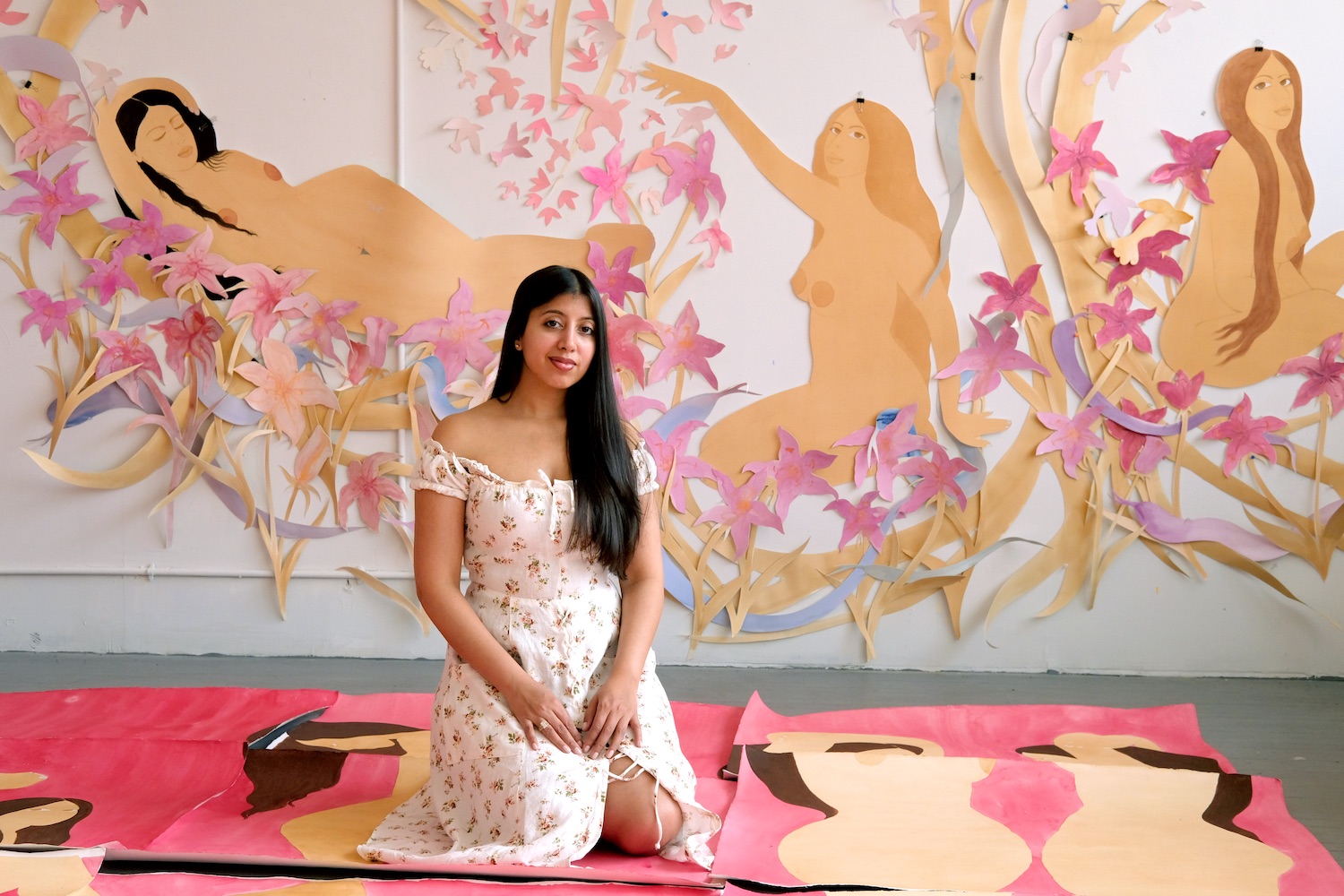Toyin Ojih Odutola likes the immediacy of drawing. Although her layered and often large works are carefully plotted, planned, and sketched out in thumbnails in advance, she allows for the moment to impact her hand and mark-making. In that way, her drawings can be diaristic, and she likes to let her audience in on that process.
The narrative nature of recent shows like “A Countervailing Theory” at the Barbican in London (through January 24, 2021) and “Tell Me a Story, I Don’t Care If It’s True” at Jack Shainman Gallery in New York (through October 2020) are driven by writings in her sketchbook, sometimes years in the making. She embarked on both series well before the COVID-19 crisis and racial justice protest movement, and yet they feel of this moment.
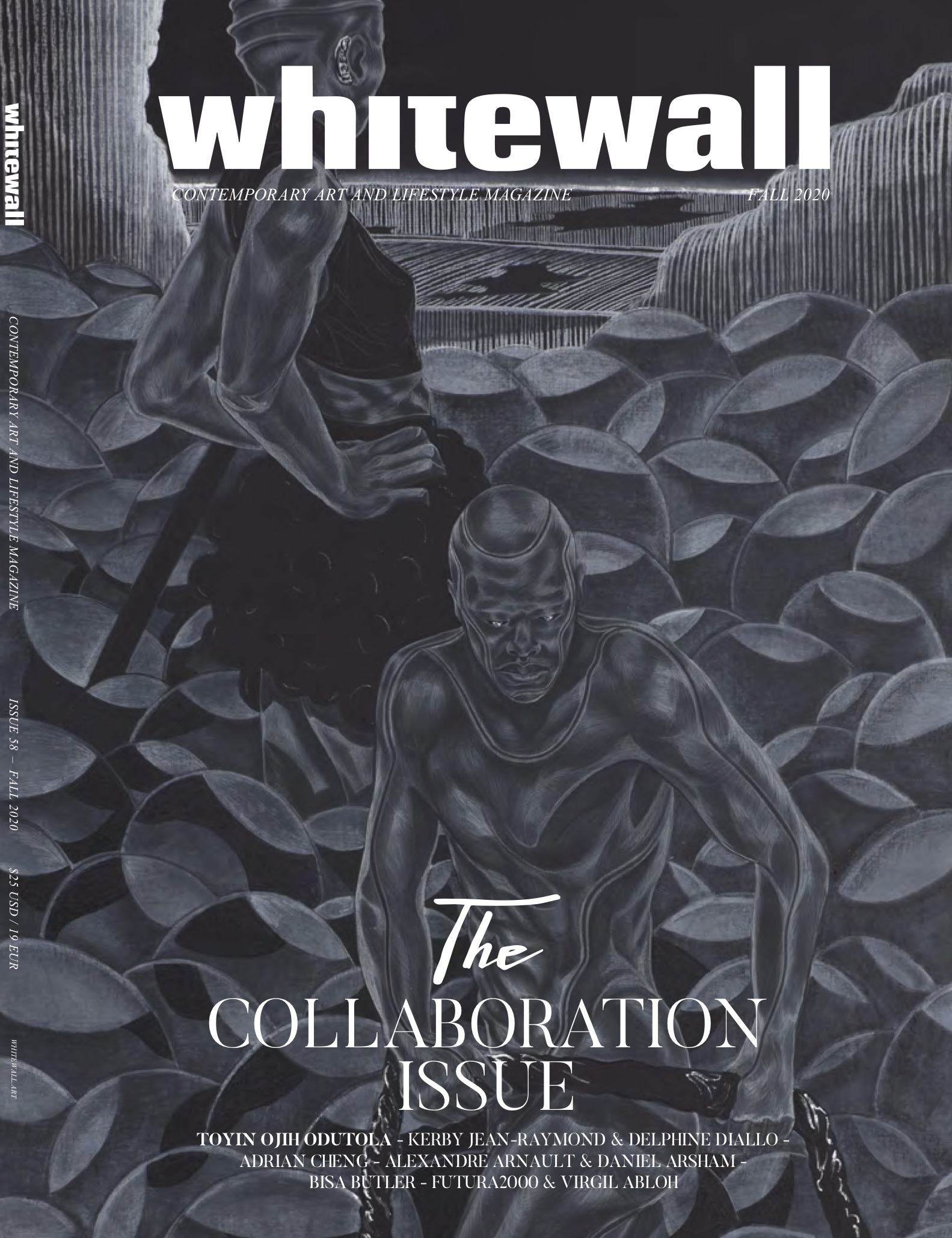
TOYIN OJIH ODUTOLA, “TO THE NEXT OUTPOST,” 2019, CHARCOAL, PASTEL, AND CHALK ON LINEN OVER DIBOND PANEL, 84 X 50 INCHES, COURTESY OF THE ARTIST AND JACK SHAINMAN GALLERY, NEW YORK.
Whitewall spoke with Ojih Odutola about how she came to propose a parable of an ancient society of ruling women warriors, and why she’s always seeking to be challenged.
WHITEWALL: Where did your current show, “A Countervailing Theory” at the Barbican in London, begin?
TOYIN OJIH ODUTOLA: The story itself has been in me since I was 19. I would write notes in my sketchbook never really knowing what it was. It was a seed, a string. The thing that catapulted me into really exploring it as a series was listening to a BBC podcast, A History of the World in 100 Objects. They did it in partnership with the British Museum. One of the objects was an Ife sculpture. It’s talking about the how British had to contend with this artifact and understand how something so anatomically correct and beautifully constructed could be created by people who they deemed as savages, essentially, who didn’t have the mental aptitude to create something so glorious.
Imagine listening to that, being Nigerian. The program did a really good job of incorporating different people into it to discuss the complicated journey of this object to the British Museum, and what it means to be in this imperialist institution. An anthropologist at the time couldn’t conjure the idea of these people creating Ife heads, so he made up a story that the Atlanteans, the Greeks, came up from the delta and taught the Nigerians how to make these Ife heads. The imagination it took for him, to actually understand this object, to contend with this object, was so lacking in the very people that made it. He couldn’t envision them, but he could put it in any other place with any other people, just not the Nigerians who were there and have been there and are creating this thing.
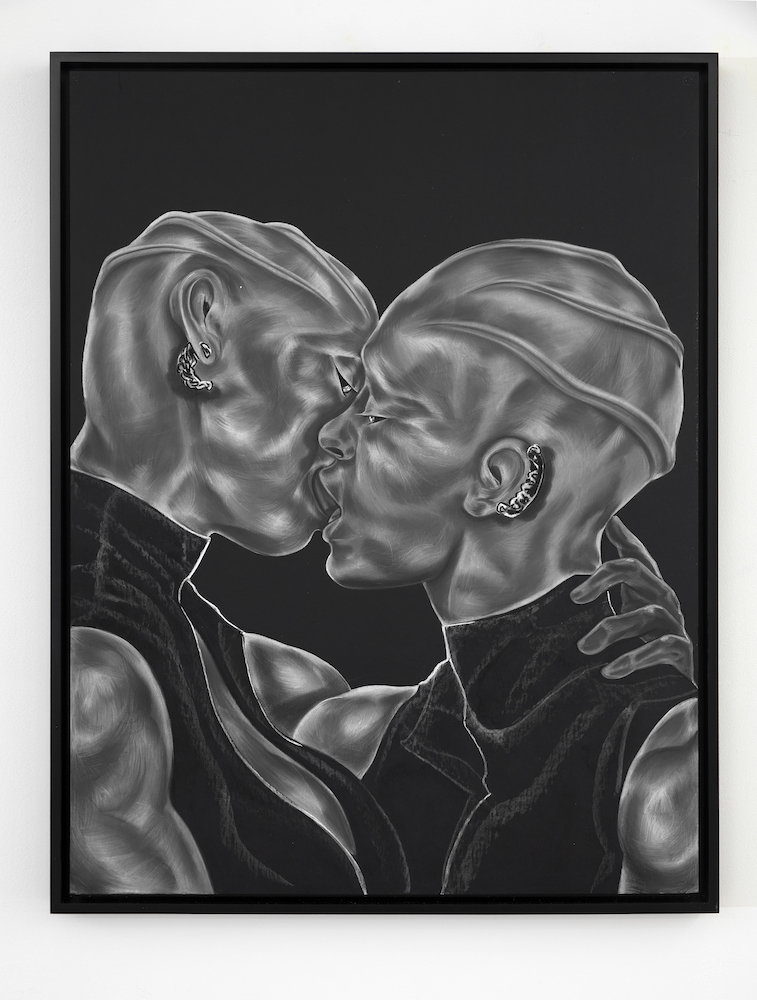
Toyin Ojih Odutola, “A Parting Gift; Hers and Hers, Only,” from “A Countervailing Theory,” 2019, © Toyin Ojih Odutola, courtesy of the artist, and Jack Shainman Gallery, New York.
WW: Wow.
TOO: And then I read from a geological survey about the rock formations in central Nigeria—there are millions of years old rock formations that come up from the ground due to volcanic activity, and they rise to these columned shapes. They exist as this artifact of the natural history of the region, and I thought about, “Wow, if he conjure up Atlanteans, why can’t I conjure up an ancient civilization that interacted with these rocks?”
The third moment was when I started interacting with a different surface. Normally, I work on paper, and for the first time I decided to work on black painted gesso linen. The process of drawing with white chalk, white charcoal, and pastel on that black surface did something to my mark-making. At first it seemed unfamiliar to me and strange. I was trying to see what proclivities my mark-making would go toward. It was all out of my imaginary. What developed was something that was similar in feel and look to those rock formations, whether intentioned or not. The series developed from that point on. I just remember feeling very terrified while working on it and very excited because it looked like nothing I’d seen before.
WW: Why did you want to work on black painted gesso linen?
TOO: I’d always worked on paper, and yet my work was called paintings. My show at the Whitney was called paintings. They couldn’t really place it in any other way other than a painting because it was so layered and rendered with such richness that it had to be painterly in some way. So I thought, “I might as well just try that surface because y’all are calling them paintings anyway!” I had to transform my hand to accommodate this thing, and that also transformed the story.
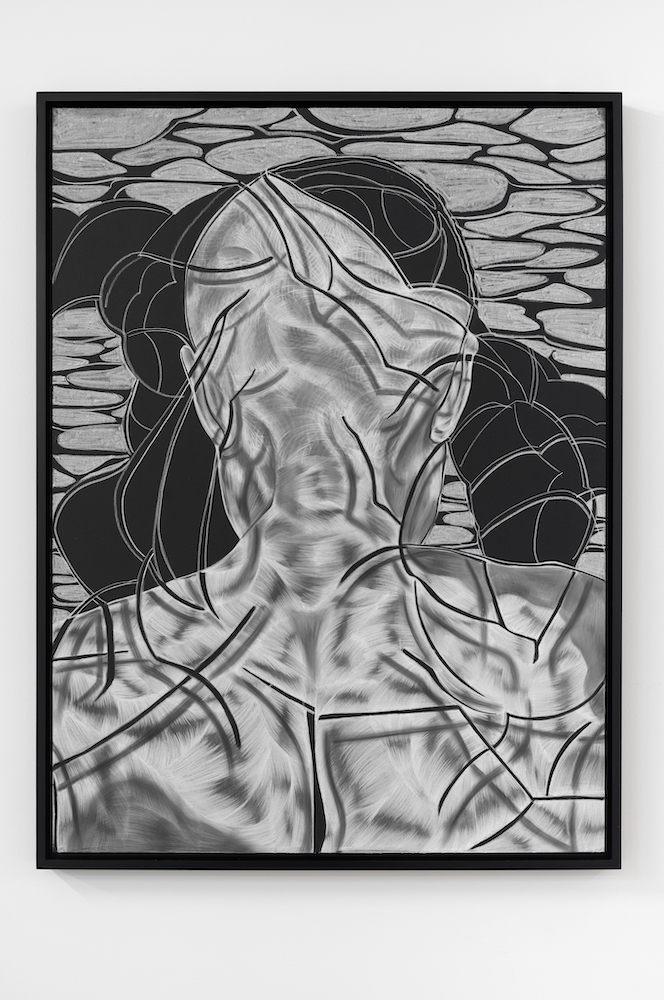
Toyin Ojih Odutola, “Establishing the Plot from A Countervailing Theory,” 2019, © Toyin Ojih Odutola, courtesy of the artist and Jack Shainman Gallery, New York.
WW: You’ve talked about the importance of the immediacy of drawing for you. Was this still immediate, on linen?
TOO: I always want to preserve that immediacy, because that’s why I love drawing so much. People feel that. There are moments that are spontaneous, even though I do plan and construct and compose all of the images. Everything you’re seeing is intentioned. I do that also to leave room for myself, when I am interacting in the drawing, where I feel this is a decision I have to make right now. That can be influenced by the fact that it’s raining outside, by me listening to an audiobook, anything. It’s become very much like this osmosis that I transmit onto the surface. And sometimes it’s a mistake, I’m not going to lie. I leave it there because I know that it’s felt. It’s very diaristic in that way.
It’s me at a very specific time. I’m not her anymore. I’m really proud of the series now, and lockdown has given me a moment to process the work. The woman who made that work was really searching; she was really mining for something. She’s searching, mining, needing to understand not just herself, an ancient history she’s conjuring, but also trying to reach out to those “savages” that unfortunate scientist could not have imagined were complex enough to paint this story. It felt very ancestral. There were moments that were really emotional for me. This was much deeper in me.
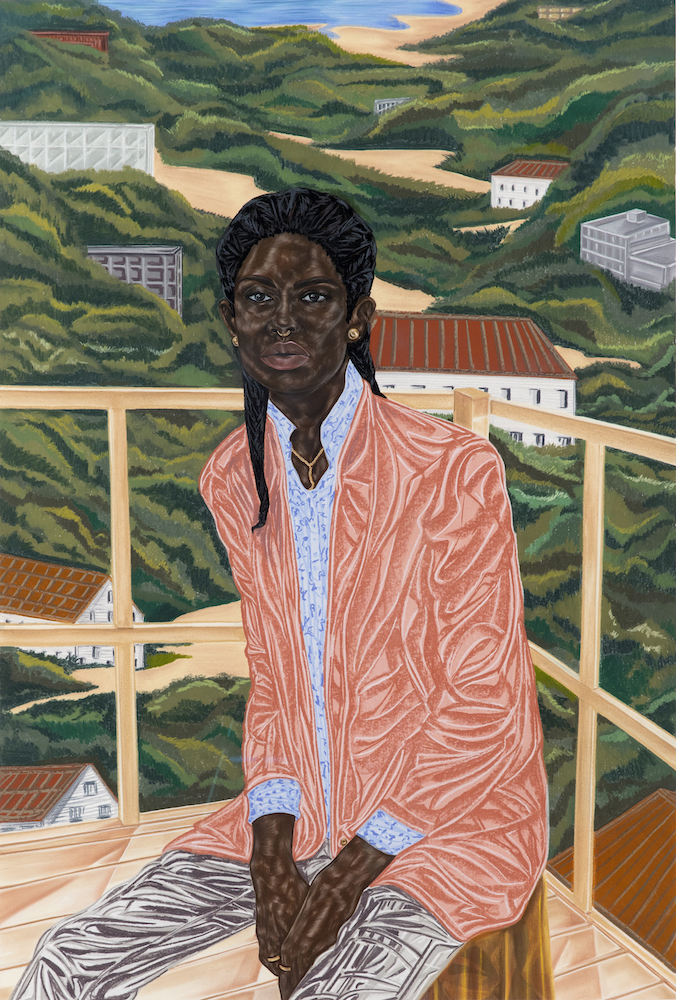
Toyin Ojih Odutola, “The Missionary,” 2017, © Toyin Ojih Odutola, courtesy of the artist and Jack Shainman Gallery, New York.
WW: The installation at the Barbican is also unique. How do you want people to move through this series?
TOO: The whole space is so amazing because you move through in increments, you don’t know what’s coming around the curve. You are moving only in one direction, you can’t go back, you have to figure out what’s coming next. Which is such a great analogy for artmaking. It’s like, I can’t go back. I’ve made that decision. I have to keep going forward to see where this leads. It was the closest that I thought an audience could mirror what I experience in the studio.
WW: And how did you come to collaborate with Peter Adjaye on the soundscape for the show?
TOO: The whole process felt incredibly cinematic. There’s a lot of layers of narrative in it. I knew that I wanted another artist to collaborate with in terms of the space and the presentation of the work. Peter came to mind. I’ve known Peter for a while and I asked him if he would like to create an artwork to accompany this. He created this beautiful soundscape that is so otherworldly and beautifully sources so many different sounds. It has all these moments throughout the space. It’s so brilliantly composed, and I’m so glad that he took the time to do this with me. I was doing this in my own world, and he’s doing this separately, and the fact that it works so well in the end is so exciting.
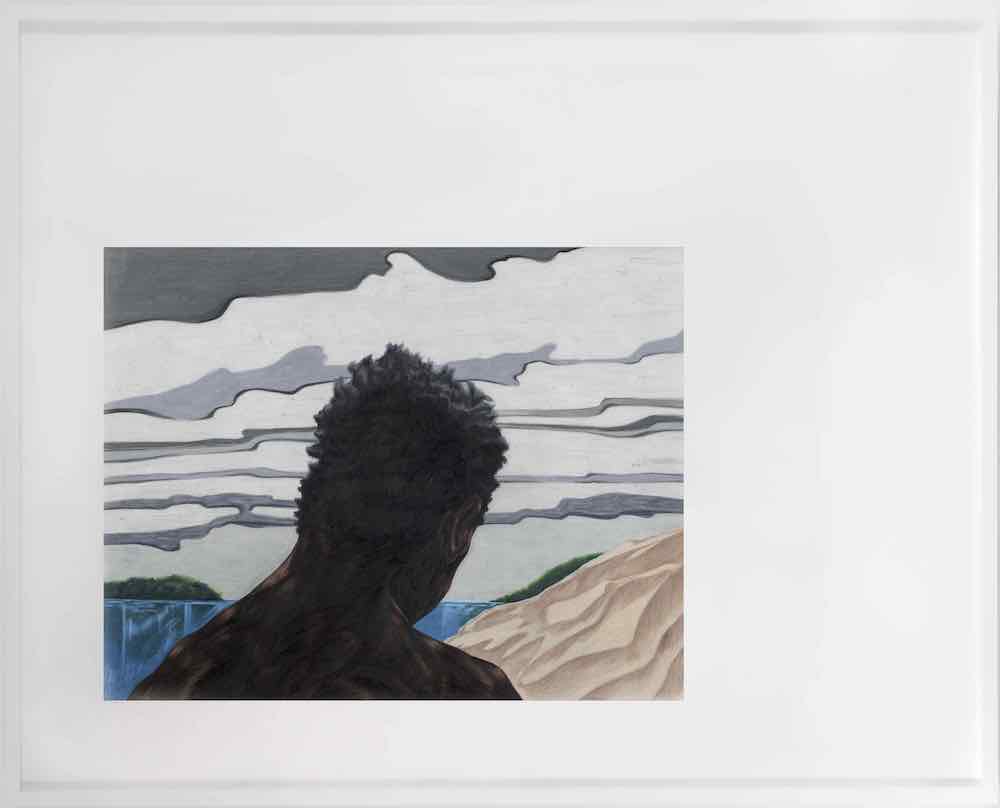
Toyin Ojih Odutola, “For All the Wrong Reasons,” 2020, © Toyin Ojih Odutola, courtesy of the artist and Jack Shainman Gallery, New York.
WW: So once you’ve finished this huge series, how did you start working on the next body of work, which was shown online this summer and in person this fall at Jack Shainman, “Tell Me a Story, I Don’t Care If It’s True”?
TOO: I spent all of 2019 building this story. I think it was a solid eight months of every day, day and night. By the fall of 2019, I needed a mental break. I needed something else to be focused on. I started doing these drawings at home. I didn’t know what it was. It was purely out of my head. These were sort of stand-alone, anecdotal little vignettes, little moments.
I always write texts with my drawings. Sometimes I incorporate, sometimes I don’t. It helps me with larger series. I draw and I think about, “What’s going on here?” And I write it down in my sketchbook.
In this series, I really liked where it was going. I would keep it and see if I could bring it in somehow. I didn’t actually decide to incorporate the text until lockdown happened and I was full-on working on this series. I’m very insecure about my writing. I don’t consider myself a writer; I’m an artist. I was like, “You only live once, let’s go.” So I put it in, and to my much relief and joy people really liked it. It really helped to have a conversation between the images and text. It’s this back and forth. And that’s what I do in my mind. I’m always trying to incorporate my process into people’s experience of my work.
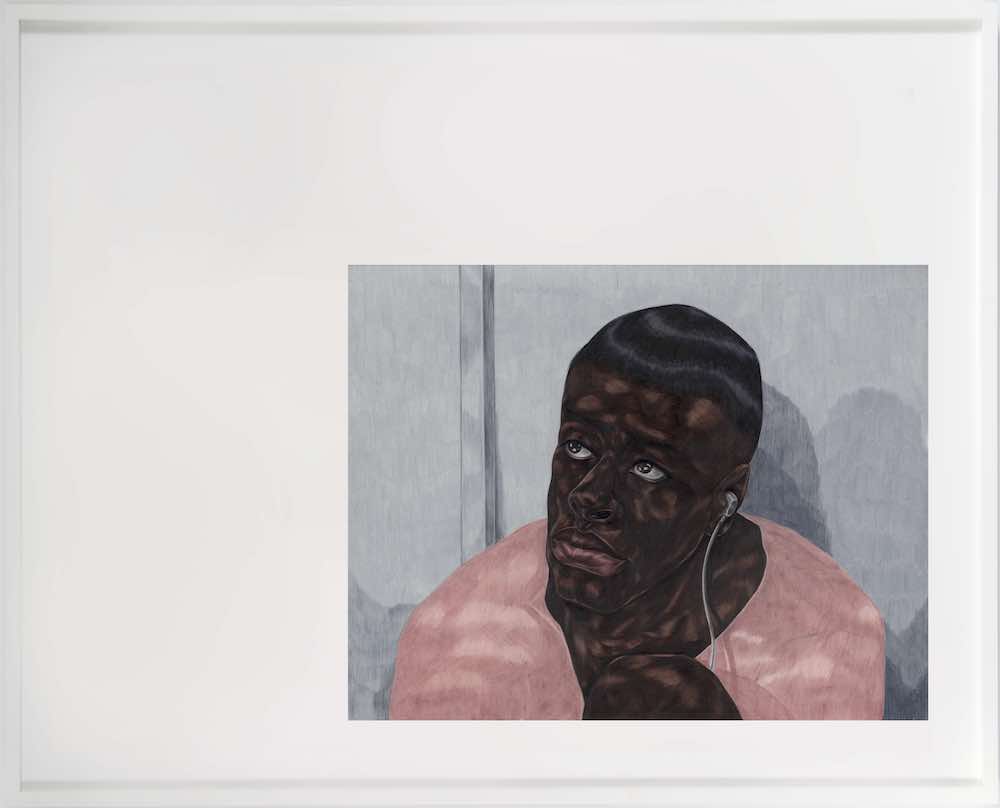
Toyin Ojih Odutola, “Misread,” 2020, © Toyin Ojih Odutola, courtesy of the artist and Jack Shainman Gallery, New York.
WW: When we first looked at the work over the summer, I couldn’t help but see it as people at home in isolation, because that’s what we were experiencing. It feels oddly timely.
TOO: Even now when I look at “A Countervailing Theory,” it’s so odd because the story that takes place in it, I made it in 2019. I didn’t know we would be mired with COVID-19. But somehow it really is perfect for the time. Even with the lockdown, and the delay, it was like we’re not ready for it yet—give it a couple more months.
WW: Prepare the people for it!
TOO: COVID has revealed the problems of the infrastructure of our society, and that’s what I was tackling with the parable, which is a society that can oppress a society. Who stands to benefit?
When I started it, I was very naive. I was like, let me show a society that is ruled by warrior women who produce and manufacture men to serve them. These manufactured beings are plentiful; they outnumber the female rulers. One group of people do not have the right to their own body, own mind, whereas the other people completely rule over that and have this manifest destiny way of living. They feel like they have a right to everything. And they only partner among themselves. It’s a homosexual relationship between these two classes. They never interact across class lines. It’s a heterosexual relationship that breaks up the system.
What I kept finding out in the process of making it was when you are devoted to the emancipation and fighting for freedom and equality of a system that is oppressed, in your heart of hearts, I genuinely was asking this question, “If you were to be put in that position of the oppressor, would you fight against equality in the same way? If you were in the position of the oppressor, how would you feel? Would you fight to keep that position?”
I think equality is possible, but people have to let go of their entitlement. Because there are hierarchies that exist, even within the margins. That was something that I wasn’t so comfortable with, but I’m glad it was revealed to me, and I learned a lot from that.
Every series I do, I learn so much. I’m always seeking to be challenged by my own work in the process of making it. I have a position, I have an idea, I have questions, but I do go into it blindly. I have to let the story carry me, and whatever direction I go, whatever things happen in the immediacy of making, I’m going to let that guide me.
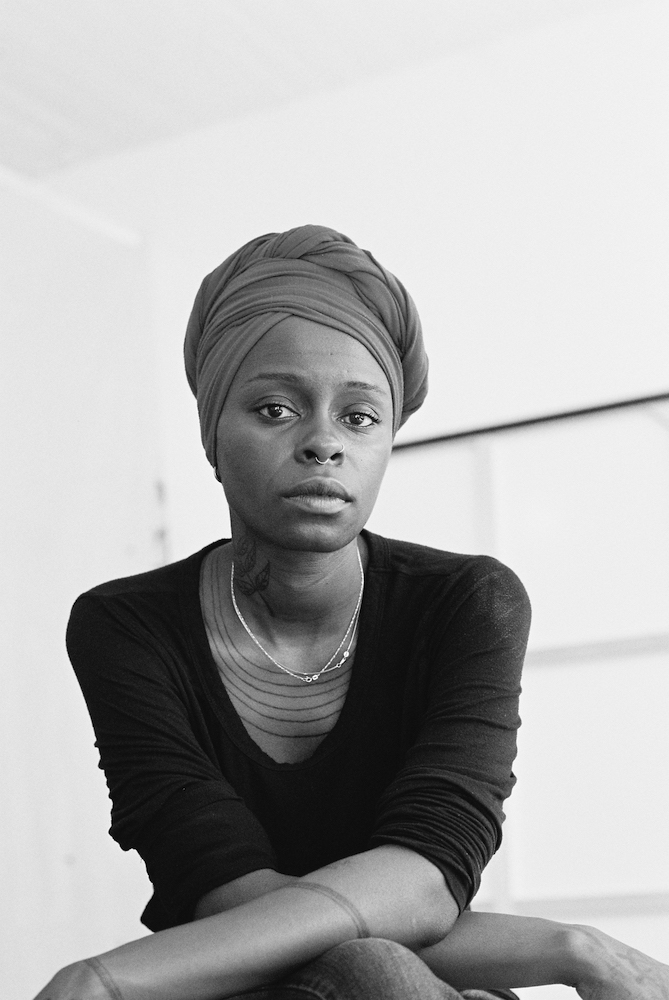
Portrait of Toyin Ojih Odutola, photo by Beth Wilkinson, © Toyin Ojih Odutola, courtesy of the artist and Jack Shainman Gallery, New York.







